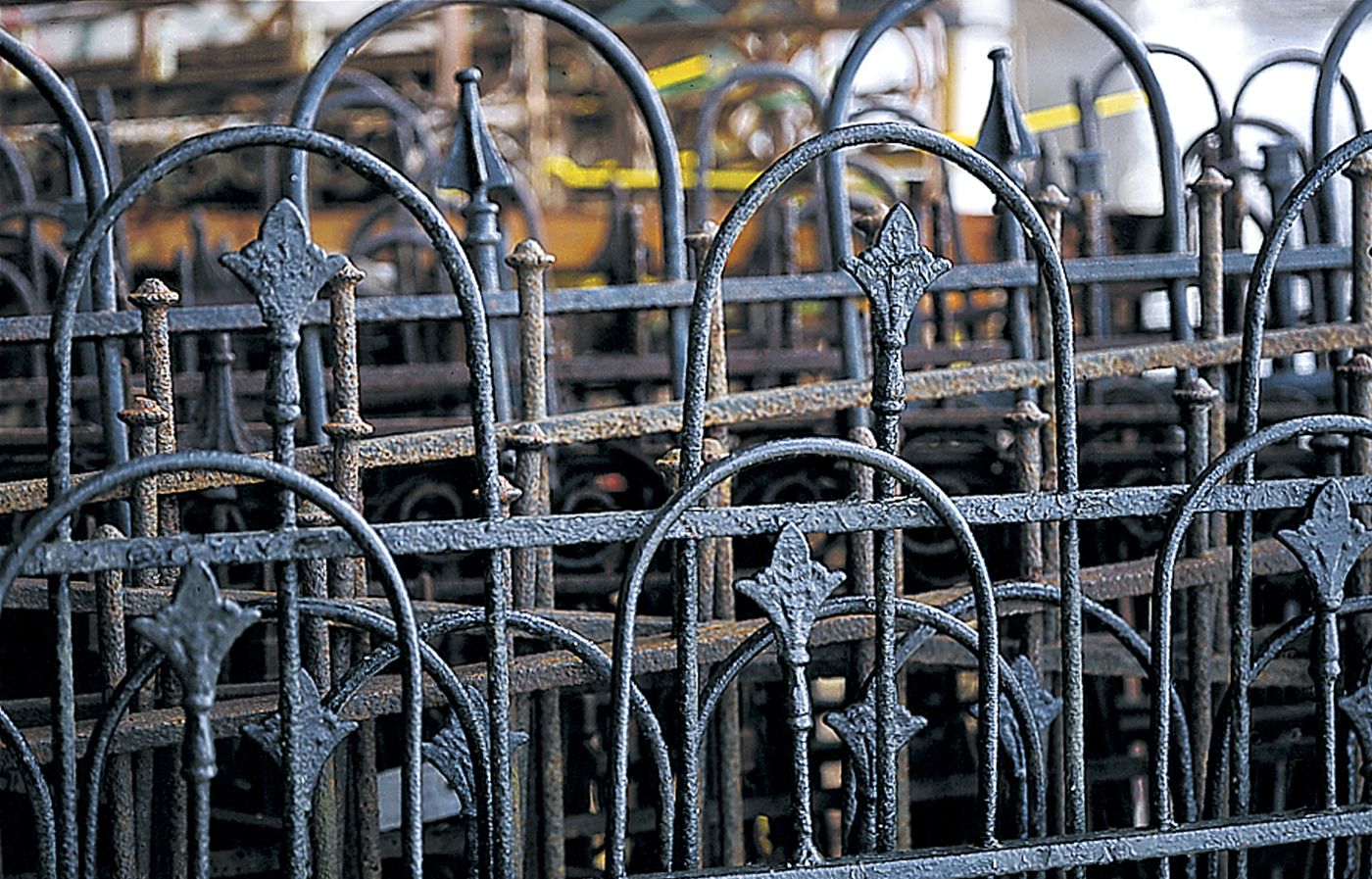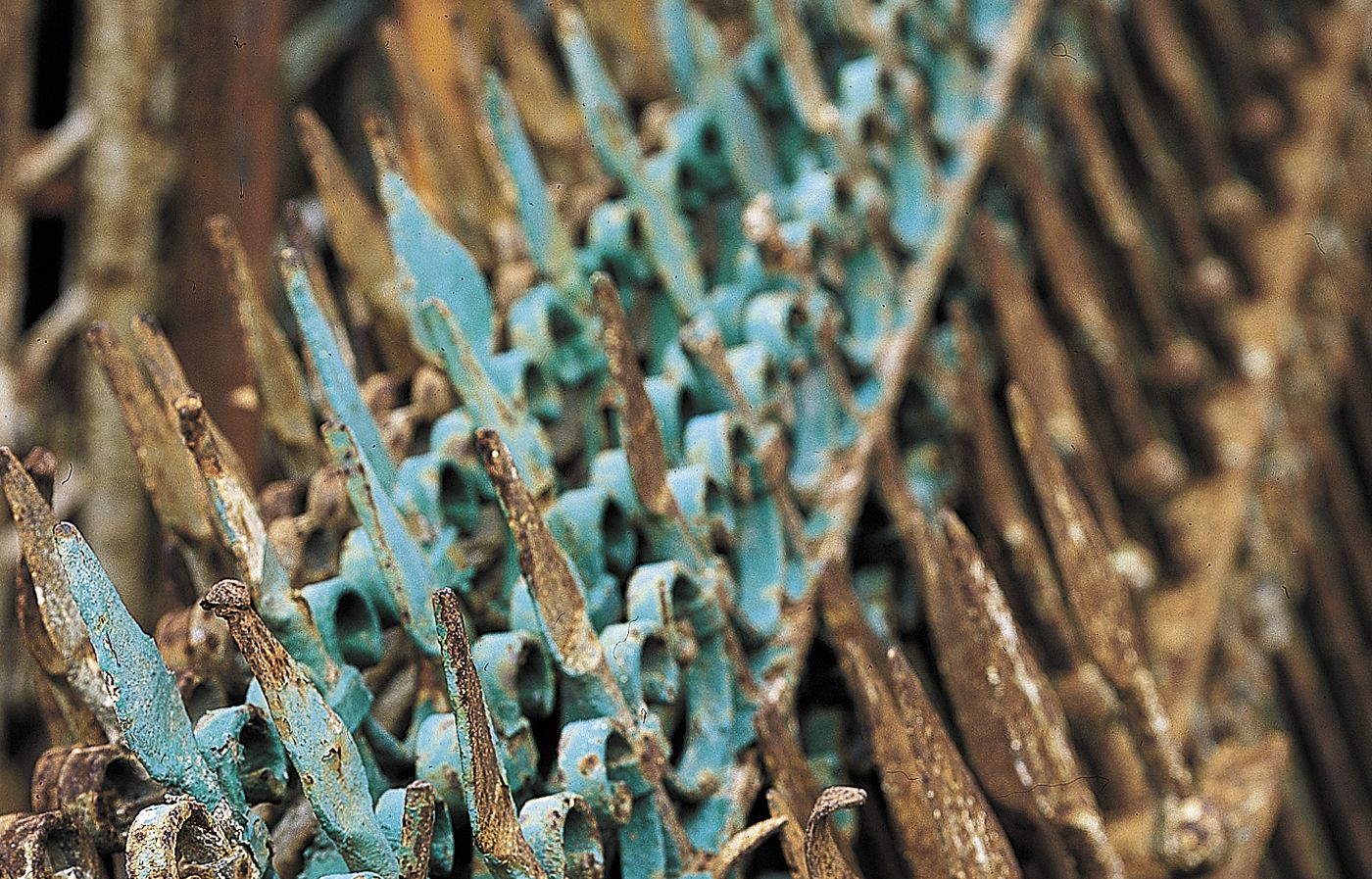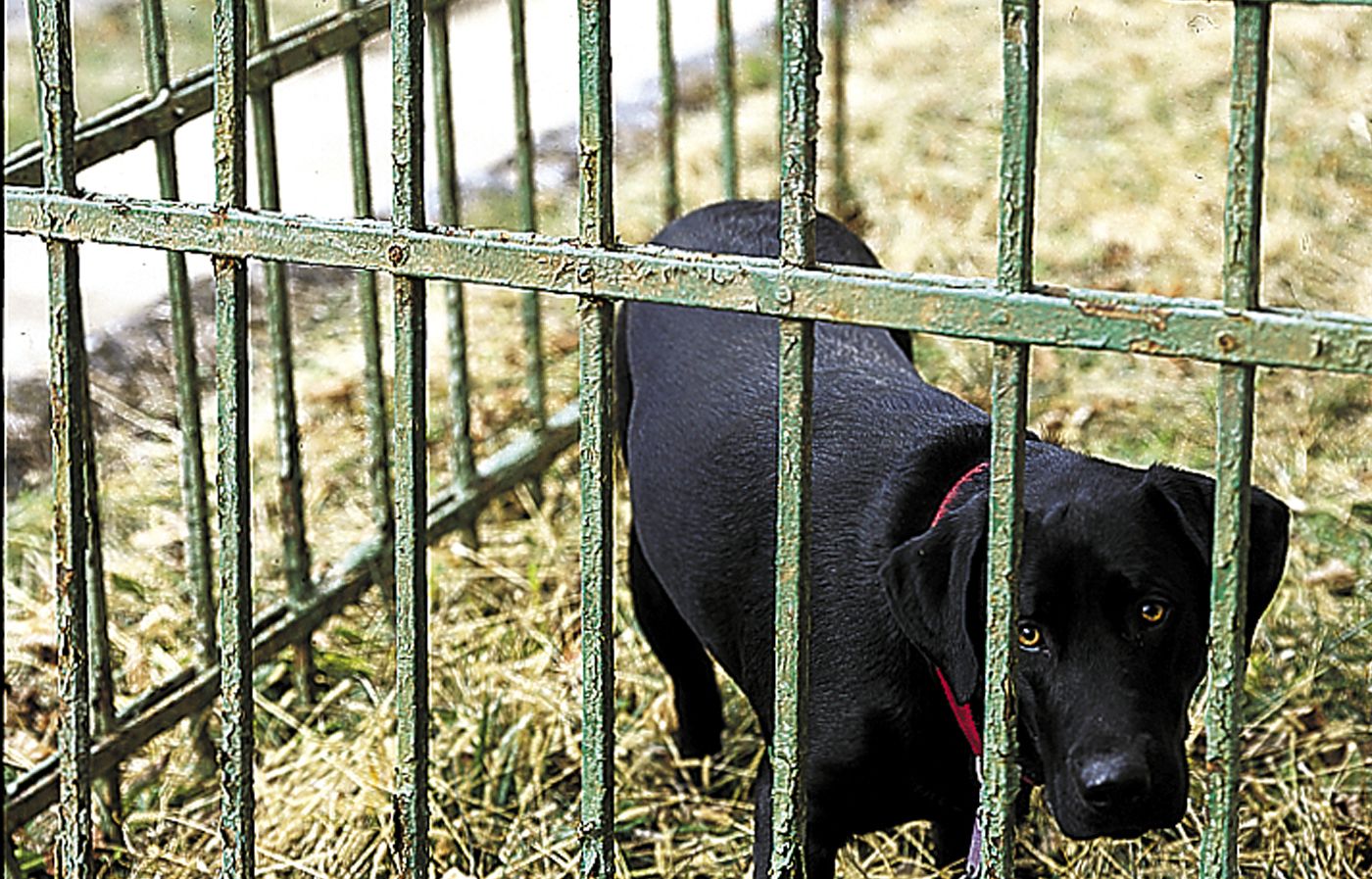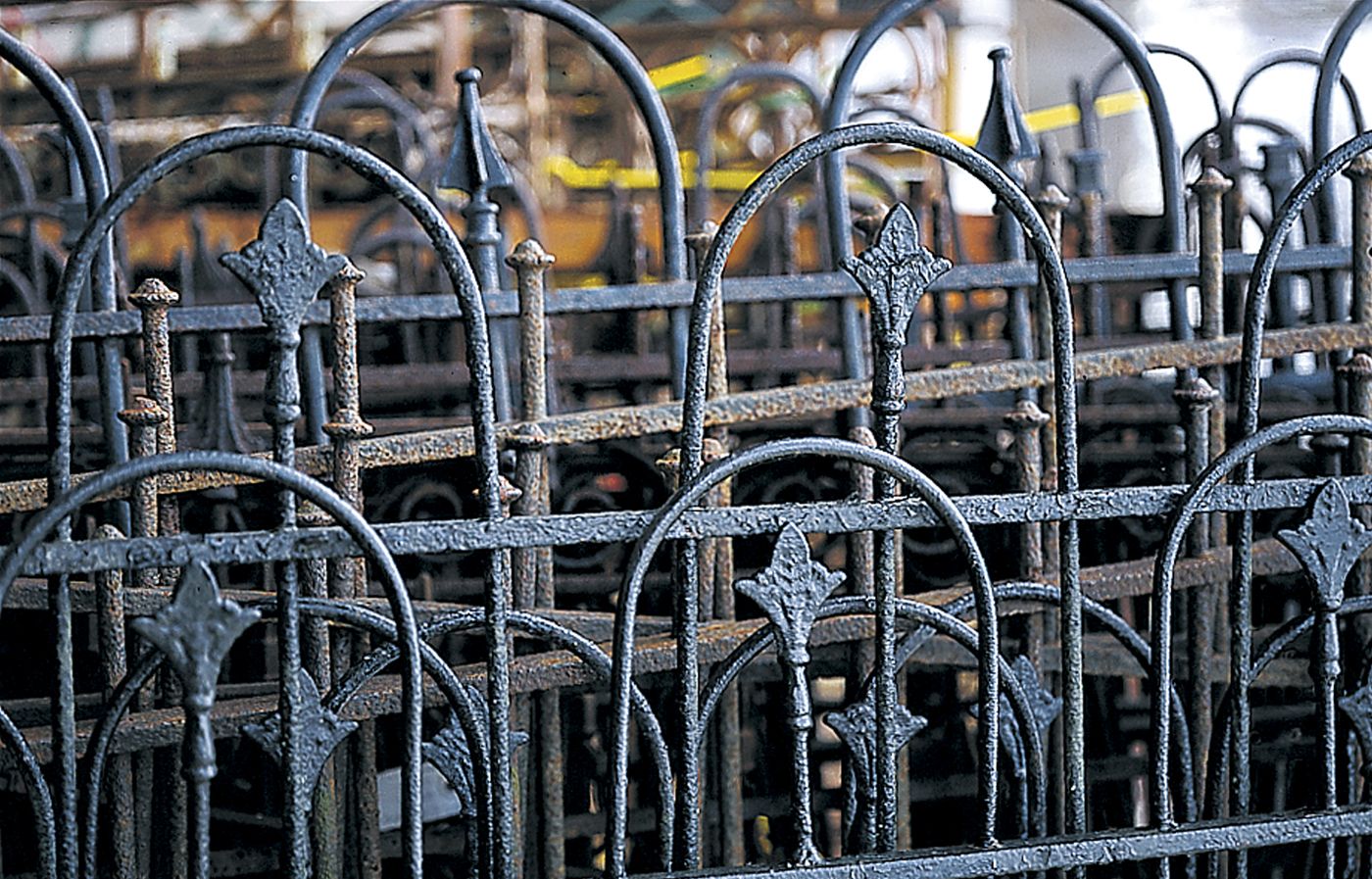
Ornamental iron fences are symbols of elegance and sophistication in American architecture. They double as both security and art, enhancing the curb appeal of the properties they surround. This guide explores the rich history of ornamental ironwork, its various styles, and how you can include these classic elements into your home and landscape.
History of Ornamental Iron Fences in America
During the colonial period, ornamental iron fences were rare in America. They were imported from England, and only churches, public buildings, and affluent colonists could afford them.
By the early 19th century, domestic blacksmith shops began producing architectural iron that could compete with imports in both quality and design, making this ironwork more accessible to less wealthy property owners.
Types of Antique Iron Fences
The evolution of iron fence production in America led to two types of antique fences: wrought-iron and cast-iron.
Wrought-Iron Fences
Wrought-iron fences have winding, ribbonlike patterns, which give them a lightweight appearance. Creating wrought-iron fences is labor-intensive and requires a high level of skill, resulting in unique pieces that have the crafter’s signature, such as hammer marks or etchings. Their design also makes them suitable for complementing natural landscapes.
Cast-Iron Fences
Invented in the mid-19th century, cast-iron technology involved pouring molten metal into molds, allowing the mass production of identical fence sections. Typically painted black or dark green, these fences became a common feature of Victorian-era cityscapes, especially where security was a concern.
Cast-iron fence demand reached its height between 1860 and 1890. Renowned manufacturers, such as Wood & Perot of Philadelphia, produced catalogs showcasing various designs that you could order by number. This standardization and the ability to transport fences by train made them accessible to homeowners nationwide.
The Resurgence of Ornamental Iron Fences
While antique iron fences remain popular, there has been a renewed interest in ornamental ironwork for modern homes and landscapes. Homeowners want to combine traditional ironwork with contemporary manufacturing techniques to create fences with vintage designs that meet modern building codes.
Modern Manufacturing
Today, ornamental iron fences benefit from advanced manufacturing processes that allow for greater precision and consistency. Computer-aided design (CAD) and computer numerical control (CNC) machines enable manufacturers to accurately replicate intricate historical patterns. Homeowners can also customize traditional designs to suit their specific needs and preferences.
Building materials and finishes have also improved. High-quality steel alloys have increased wear and rust resistance compared to older materials, while advanced powder coating techniques provide a wider range of color options and better weather protection, extending the lifespan of modern fences.
Cost Considerations for Replicas
While modern manufacturing has made ornate iron fences more accessible, creating replicas of antique designs is still expensive and requires specialized skills. Some manufacturers offer simplified versions of historical designs at a more affordable price. Additionally, aluminum or steel fences can mimic wrought iron but are more durable and require less maintenance.

Incorporating Salvaged Iron Fences in Modern Design
Salvaged iron fences offer homeowners the opportunity to add a touch of history and character to their yards.
Creative Uses for Antique Fence Sections
Landscape designer Michael Glassman suggests attaching cast-iron sections to the side of the house as vine trellises. This provides support for climbing plants and adds architectural interest to plain walls.
You can also frame iron fence sections within brick walls to create a courtyard enclosure. Glassman explains, “Now you’ve got this solid wall with a rusted iron opening with a lot of filigree. It gives privacy—letting you look out without feeling like other people are looking in—but it allows air to flow into the space.” Inside the home, these fences can serve as unique room dividers, headboards, or wall art.
Tips for Choosing Salvaged Ironwork
Mike Whiteside, co-owner of Black Dog Salvage in Roanoke, Virginia, advises, “If you want function, you’ll need something that’s got more integrity, especially if you plan to use it outside.” For outdoors, find pieces with minimal rust and pitting to ensure longevity.
If you’re looking to create a continuous fence line, consider the amount of material and consistency of the pattern. Matching sections may be expensive, as Whiteside notes, “You might pay more for 200 feet of matching fence than you would for a bunch of mismatched designs.”
The condition of the antique fence may be less important for decorative indoor use, allowing you to focus more on the design and complementing your style.
Iron Fence: Maintenance and Restoration
Preserving the beauty and integrity and extending the life of antique iron fences requires regular maintenance and restoration.
Rust and Corrosion
Rust is one of the most common issues with iron fences, especially those exposed to the elements. For minor rust spots, consider gently sanding the piece followed by applying a rust-inhibiting primer and paint. More severe cases may require professional sandblasting before refinishing.
Structural Integrity
Inspect for any structural issues, such as holes and gaps, and address them immediately. Repair or replace any weakened or broken sections to prevent further damage.
Repainting and Preservation
Traditional iron fence colors, such as black and dark green, look authentic and provide protection against weathering. For lasting results, clean and prime the surface before using a high-quality exterior paint for metal surfaces.
If you have a more valuable antique piece, consider consulting with a preservation specialist. They can advise on restoration techniques and materials to maintain the fence’s original look and value.

Finding Antique Iron Fences
There are many places where you can find antique ironwork, each with different advantages in selection, availability, and price.
Architectural Salvage Yards
Architectural salvage yards are specialized businesses that often carry various historical architectural elements, including iron fences in various styles and conditions. Salvage yards typically offer more extensive selections and may have knowledgeable staff that can provide information about the history and proper care of the pieces.
Prices at salvage yards can vary widely depending on the rarity, condition, and completeness of the fence sections. Although the prices may be higher compared to other sources, the quality and authenticity of the pieces are often better.
Garage Sales and Auctions
Garage sales, estate sales, and auctions can be great sources for antique iron fences. These venues often have unique pieces at lower prices than salvage yards but limited selections and variable conditions.
When shopping at these events, act quickly and research what you’re looking for ahead of time. Bring measurements of the space where you plan to use the fence and consider how you’ll transport large or heavy sections.
DIY Iron Fencing
With some creativity and basic skills, do-it-yourself (DIY) enthusiasts can transform these historical pieces into stunning features for their homes and gardens.
Creating Indoor Partitions
To create a freestanding partition, frame a fence section vertically between wooden posts anchored to the floor and ceiling. This approach allows you to define separate areas within a room while maintaining an open feel and allowing light to pass through.
For a less permanent solution, consider mounting fence sections on casters to create mobile screens. This option allows you to reorganize your space as needed.
Enhancing Outdoor Spaces
Consider using sections of salvage fence to build an arbor or pergola for climbing plants in your garden. You can complement wood fences with iron gates or decorative panels to create a unique hybrid design. For an easy project, mount iron fence sections on garden walls or fences to add depth and texture. These pieces can merge form and function, serving as decorative backdrops for plants or as supports for trees.
Iron Fences: Our Conclusion
Ornamental iron fences have a rich legacy of craftsmanship and design that have shaped American architecture for generations. Today, homeowners still consider including these timeless designs, whether authentic or replicated, to enhance the charm of their homes. They have a variety of options to choose from when looking for these pieces, and with the proper care and maintenance, these works of art can protect, partition, and impress well into the future.

